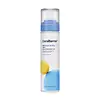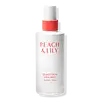What's inside
What's inside
 Key Ingredients
Key Ingredients

 Benefits
Benefits

 Concerns
Concerns

 Ingredients Side-by-side
Ingredients Side-by-side

Water
Skin Conditioning2,3-Butanediol
HumectantDiglycerin
HumectantMethylpropanediol
SolventPentylene Glycol
Skin ConditioningGlycerin
HumectantCeramide NP
Skin ConditioningCeramide AP
Skin ConditioningCeramide As
Skin ConditioningCeramide Ng
Skin ConditioningBeta-Sitosterol
Emulsion StabilisingCeramide EOP
Skin ConditioningPortulaca Oleracea Extract
Skin ConditioningLimnanthes Alba Seed Oil
Skin ConditioningHydrogenated Lecithin
EmulsifyingCitrus Aurantium Bergamia Fruit Oil
MaskingBetula Platyphylla Japonica Juice
Skin ConditioningLavandula Angustifolia Oil
MaskingMatricaria Recutita Flower Oil
PerfumingOrange Roughy Oil
Skin ConditioningLemongrass Oil
Lilium Speciosum Flower Oil
MaskingSimmondsia Chinensis Seed Oil
EmollientCarthamus Tinctorius Seed Oil
MaskingOctyldodeceth-16
EmulsifyingPolyglyceryl-10 Stearate
Skin ConditioningSodium Citrate
BufferingHydroxyacetophenone
AntioxidantEthylhexylglycerin
Skin ConditioningCitric Acid
BufferingCarbon Dioxide
Caprylic/Capric Triglyceride
MaskingDisodium EDTA
Dipropylene Glycol
Humectant1,2-Hexanediol
Skin ConditioningGlyceryl Glucoside
HumectantSucrose Stearate
EmollientGlycosphingolipids
EmollientLinoleic Acid
CleansingLimonene
PerfumingCitronellol
PerfumingWater, 2,3-Butanediol, Diglycerin, Methylpropanediol, Pentylene Glycol, Glycerin, Ceramide NP, Ceramide AP, Ceramide As, Ceramide Ng, Beta-Sitosterol, Ceramide EOP, Portulaca Oleracea Extract, Limnanthes Alba Seed Oil, Hydrogenated Lecithin, Citrus Aurantium Bergamia Fruit Oil, Betula Platyphylla Japonica Juice, Lavandula Angustifolia Oil, Matricaria Recutita Flower Oil, Orange Roughy Oil, Lemongrass Oil, Lilium Speciosum Flower Oil, Simmondsia Chinensis Seed Oil, Carthamus Tinctorius Seed Oil, Octyldodeceth-16, Polyglyceryl-10 Stearate, Sodium Citrate, Hydroxyacetophenone, Ethylhexylglycerin, Citric Acid, Carbon Dioxide, Caprylic/Capric Triglyceride, Disodium EDTA, Dipropylene Glycol, 1,2-Hexanediol, Glyceryl Glucoside, Sucrose Stearate, Glycosphingolipids, Linoleic Acid, Limonene, Citronellol
Cucumis Sativus Fruit Water
Skin ConditioningWater
Skin ConditioningGlycerin
HumectantMethylpropanediol
Solvent1,2-Hexanediol
Skin ConditioningPropanediol
SolventEthylhexyl Palmitate
EmollientPrunus Persica Fruit Extract
AbrasiveCentella Asiatica Extract
CleansingMadecassic Acid
Skin ConditioningNelumbo Nucifera Root Extract
Skin ConditioningBambusa Textilis Stem Extract
Skin ConditioningArctium Lappa Root Extract
Skin ConditioningMorus Alba Leaf Extract
Skin ConditioningCeramide NP
Skin ConditioningSodium Hyaluronate
HumectantHyaluronic Acid
HumectantHydrolyzed Hyaluronic Acid
HumectantCeramide Ns
Skin ConditioningCeramide As
Skin ConditioningButylene Glycol
HumectantCaprylic/Capric Triglyceride
MaskingAsiaticoside
AntioxidantAloe Barbadensis Leaf Extract
EmollientPhytosphingosine
Skin ConditioningCitric Acid
BufferingGlycyrrhiza Glabra Root Extract
BleachingTocopherol
AntioxidantCetyl Ethylhexanoate
EmollientCeramide AP
Skin ConditioningHydrogenated Lecithin
EmulsifyingEucalyptus Globulus Leaf Extract
PerfumingSodium Citrate
BufferingGanoderma Lucidum Extract
Skin ProtectingPhosphoric Acid
BufferingEthylhexylglycerin
Skin ConditioningAsiatic Acid
Skin ConditioningCholesterol
EmollientPolyglyceryl-10 Oleate
Skin ConditioningPropylene Glycol
HumectantButyrospermum Parkii Butter
Skin ConditioningCeramide EOP
Skin ConditioningCucumis Sativus Fruit Water, Water, Glycerin, Methylpropanediol, 1,2-Hexanediol, Propanediol, Ethylhexyl Palmitate, Prunus Persica Fruit Extract, Centella Asiatica Extract, Madecassic Acid, Nelumbo Nucifera Root Extract, Bambusa Textilis Stem Extract, Arctium Lappa Root Extract, Morus Alba Leaf Extract, Ceramide NP, Sodium Hyaluronate, Hyaluronic Acid, Hydrolyzed Hyaluronic Acid, Ceramide Ns, Ceramide As, Butylene Glycol, Caprylic/Capric Triglyceride, Asiaticoside, Aloe Barbadensis Leaf Extract, Phytosphingosine, Citric Acid, Glycyrrhiza Glabra Root Extract, Tocopherol, Cetyl Ethylhexanoate, Ceramide AP, Hydrogenated Lecithin, Eucalyptus Globulus Leaf Extract, Sodium Citrate, Ganoderma Lucidum Extract, Phosphoric Acid, Ethylhexylglycerin, Asiatic Acid, Cholesterol, Polyglyceryl-10 Oleate, Propylene Glycol, Butyrospermum Parkii Butter, Ceramide EOP
 Reviews
Reviews

Ingredients Explained
These ingredients are found in both products.
Ingredients higher up in an ingredient list are typically present in a larger amount.
1,2-Hexanediol is a synthetic liquid and another multi-functional powerhouse.
It is a:
- Humectant, drawing moisture into the skin
- Emollient, helping to soften skin
- Solvent, dispersing and stabilizing formulas
- Preservative booster, enhancing the antimicrobial activity of other preservatives
This ingredient is an emollient, solvent, and texture enhancer. It is considered a skin-softener by helping the skin prevent moisture loss.
It helps thicken a product's formula and makes it easier to spread by dissolving clumping compounds.
Caprylic Triglyceride is made by combining glycerin with coconut oil, forming a clear liquid.
While there is an assumption Caprylic Triglyceride can clog pores due to it being derived from coconut oil, there is no research supporting this.
Learn more about Caprylic/Capric TriglycerideCeramide AP is formally known as Ceramide 6.
Ceramides are intercellular lipids naturally found in our skin that bonds dead skin cells together to create a barrier. Having a strong skin barrier leads to more firm and hydrated skin.
They are known for their ability to hold water and thus are a great ingredient for dry skin. By bolstering the skin ceramides act as a barrier against irritating ingredients. This can help with inflammation as well.
If you would like to eat ceramides, sweet potatoes contain a small amount.
Read more about other common types of ceramides here:
Ceramide NP
Ceramide EOP
Ceramide AS is formally known as Ceramides 4 and 5.
Ceramides are intercellular lipids naturally found in our skin that bonds dead skin cells together to create a barrier. They are known for their ability to hold water and thus are a great ingredient for dry skin.
Ceramide EOP is formally known as Ceramide 1 and Ceramide 1 A.
EOP stands for a linked Ester fatty acid, a linked Omega hydroxy fatty acid, and the Phytosphingosine base.
Ceramides are intercellular lipids naturally found in our skin. They bind dead skin cells together to create a barrier. The ceramides in our skin have the ability to hold water to keep our skin hydrated.
Ceramides are an important building block for our skin barrier. A strong skin barrier helps with:
If you would like to eat ceramides, sweet potatoes contain a small amount.
Read more about other common types of ceramides here:
Learn more about Ceramide EOPCeramide NP is a type of ceramide and formally known as ceramide 3.
Ceramides are intercellular lipids naturally found in our skin that bonds dead skin cells together to create a barrier. They are known for their ability to hold water and thus are a great ingredient for dry skin.
Ceramides are an important building block for our skin barrier. A stronger barrier helps the skin look more firm and hydrated. By bolstering the skin ceramides act as a barrier against irritating ingredients. This can help with inflammation as well.
If you would like to eat ceramides, sweet potatoes contain a small amount.
Read more about other common types of ceramides here:
Ceramide AP
Ceramide EOP
Citric Acid is an alpha hydroxy acid (AHA) naturally found in citrus fruits like oranges, lemons, and limes.
Like other AHAs, citric acid can exfoliate skin by breaking down the bonds that hold dead skin cells together. This helps reveal smoother and brighter skin underneath.
However, this exfoliating effect only happens at high concentrations (20%) which can be hard to find in cosmetic products.
Due to this, citric acid is usually included in small amounts as a pH adjuster. This helps keep products slightly more acidic and compatible with skin's natural pH.
In skincare formulas, citric acid can:
While it can provide some skin benefits, research shows lactic acid and glycolic acid are generally more effective and less irritating exfoliants.
Most citric acid used in skincare today is made by fermenting sugars (usually from molasses). This synthetic version is identical to the natural citrus form but easier to stabilize and use in formulations.
Read more about some other popular AHA's here:
Learn more about Citric AcidEthylhexylglycerin (we can't pronounce this either) is commonly used as a preservative and skin softener. It is derived from glyceryl.
You might see Ethylhexylglycerin often paired with other preservatives such as phenoxyethanol. Ethylhexylglycerin has been found to increase the effectiveness of these other preservatives.
Glycerin is already naturally found in your skin. It helps moisturize and protect your skin.
A study from 2016 found glycerin to be more effective as a humectant than AHAs and hyaluronic acid.
As a humectant, it helps the skin stay hydrated by pulling moisture to your skin. The low molecular weight of glycerin allows it to pull moisture into the deeper layers of your skin.
Hydrated skin improves your skin barrier; Your skin barrier helps protect against irritants and bacteria.
Glycerin has also been found to have antimicrobial and antiviral properties. Due to these properties, glycerin is often used in wound and burn treatments.
In cosmetics, glycerin is usually derived from plants such as soybean or palm. However, it can also be sourced from animals, such as tallow or animal fat.
This ingredient is organic, colorless, odorless, and non-toxic.
Glycerin is the name for this ingredient in American English. British English uses Glycerol/Glycerine.
Learn more about GlycerinHydrogenated Lecithin is created from the hydrogenation of lecithin (a group of phospholipids). Hydrogenation is a chemical reaction between hydrogen and another element.
This ingredient is an emollient and emulsifier. As an emollient, it helps soften skin by trapping moisture within. As an emulsifier, it prevents oil and water ingredients from separating.
Methylpropanediol is a synthetic solvent and humectant.
As a solvent, it helps dissolve other ingredients, helping to evenly distribute ingredients throughout the product. This ingredient has also been shown to have antimicrobial properties which makes it a preservative booster.
Methylpropanediol is able to add a bit of moisture to the skin. It also helps other ingredients be better absorbed into the skin, such as salicylic acid.
Learn more about MethylpropanediolSodium Citrate is the sodium salts of citric acid. In skincare, it is used to alter pH levels and acts as a preservative.
Its main functions are to maintain the pH of a product and neutralize metal ions.
The acidity of our skin is maintained by our glands and skin biome; normal pH level of skin is slightly acidic (~4.75-5.5).
Being slightly acidic allows our skin to create an "acid mantle". This acid mantle is a thin barrier that protects our skin from bacteria and contaminants.
Learn more about Sodium CitrateWater. It's the most common cosmetic ingredient of all. You'll usually see it at the top of ingredient lists, meaning that it makes up the largest part of the product.
So why is it so popular? Water most often acts as a solvent - this means that it helps dissolve other ingredients into the formulation.
You'll also recognize water as that liquid we all need to stay alive. If you see this, drink a glass of water. Stay hydrated!
Learn more about Water